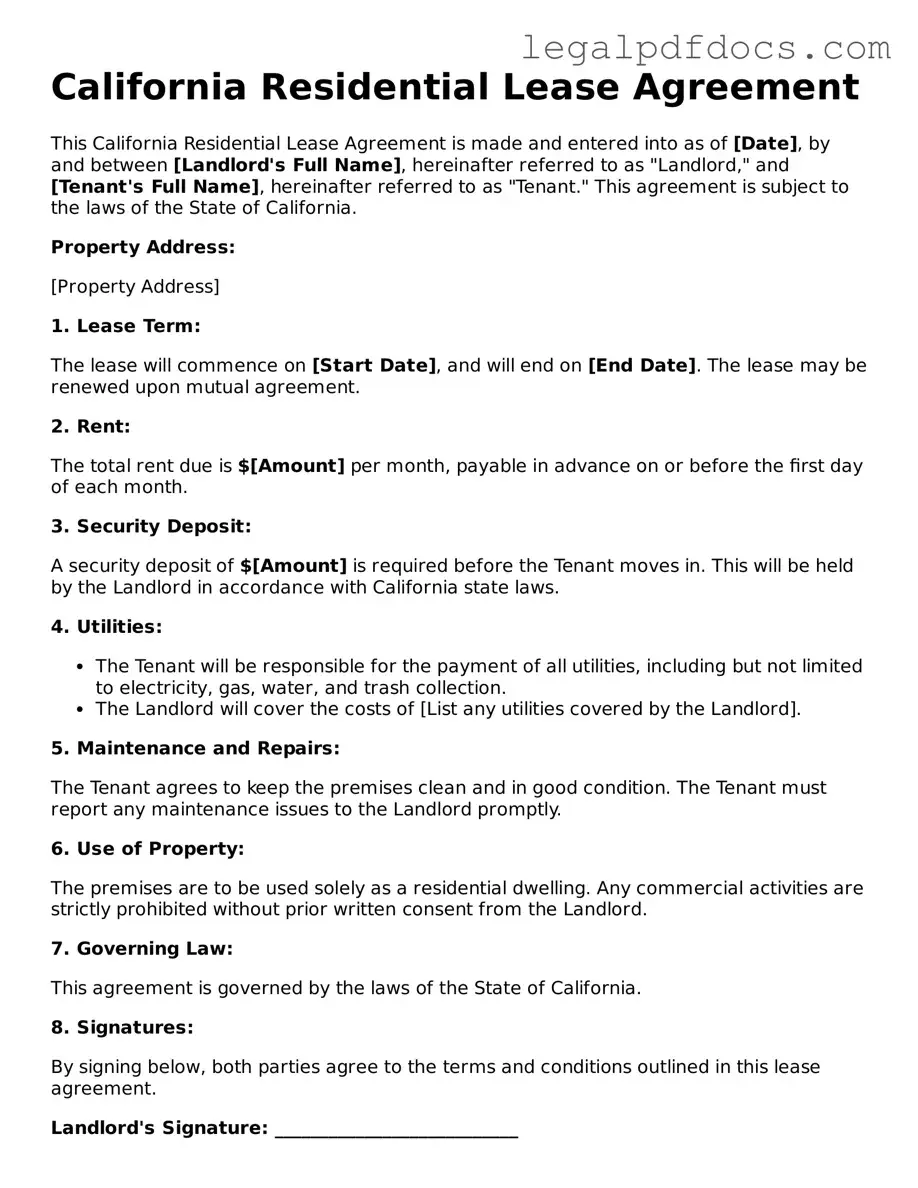Official Residential Lease Agreement Form for California
The California Residential Lease Agreement is a legally binding document that outlines the terms and conditions between a landlord and tenant for renting residential property in California. This form serves to protect the rights of both parties while ensuring a clear understanding of their obligations. To get started on securing your rental agreement, fill out the form by clicking the button below.
Open Residential Lease Agreement Editor Here
